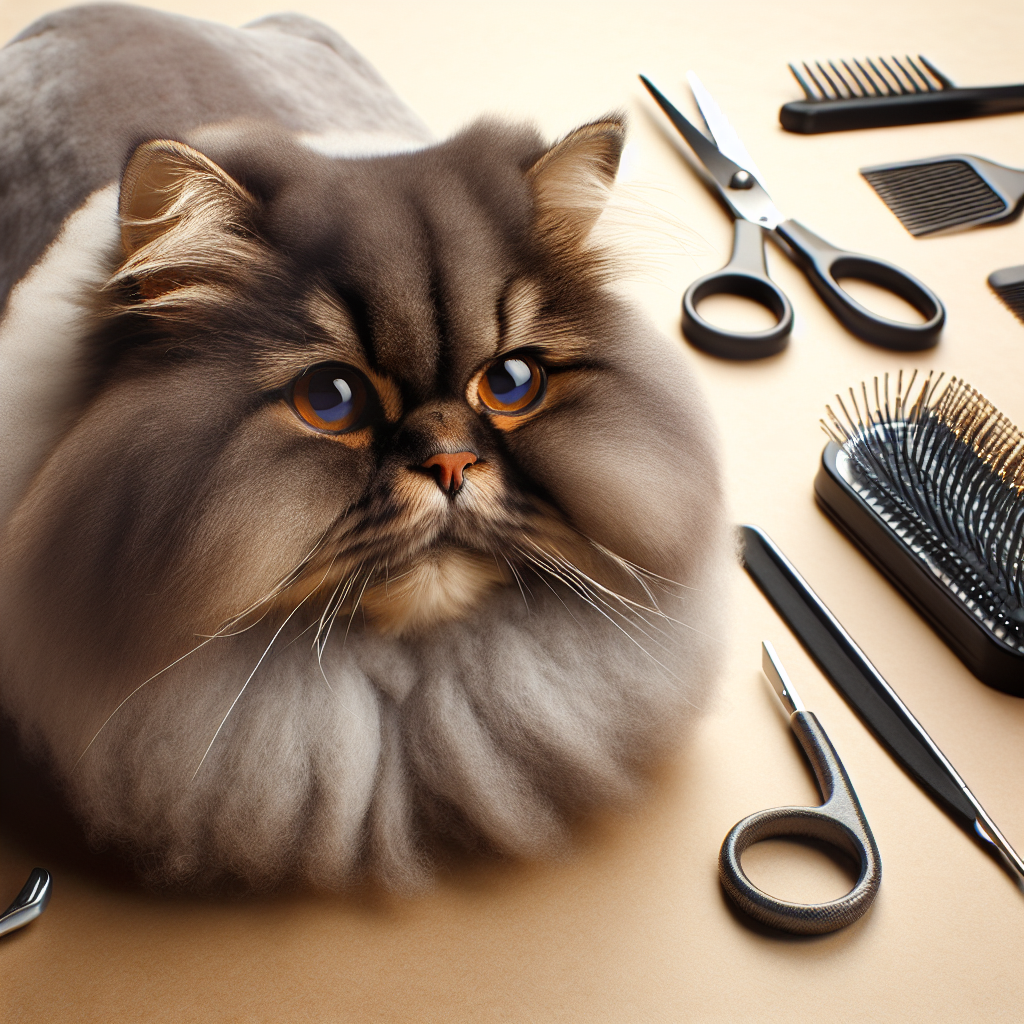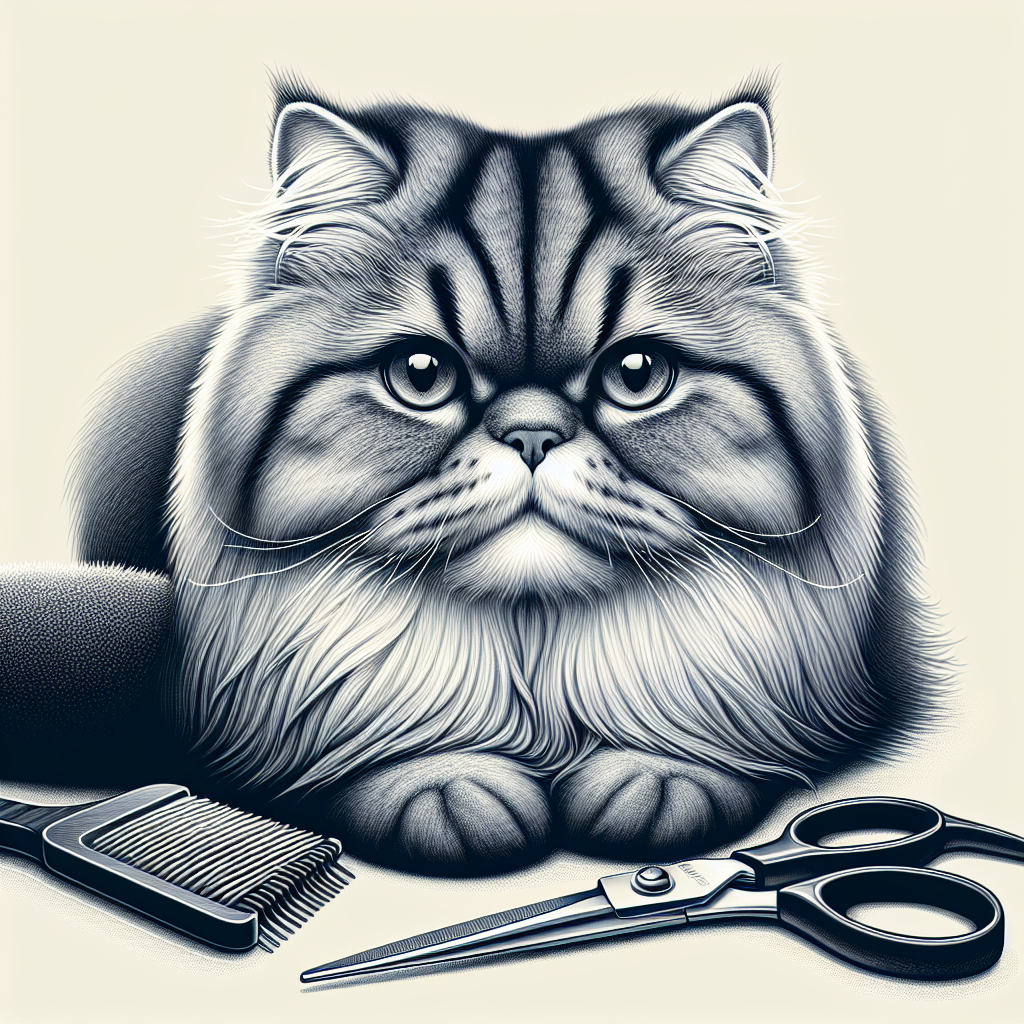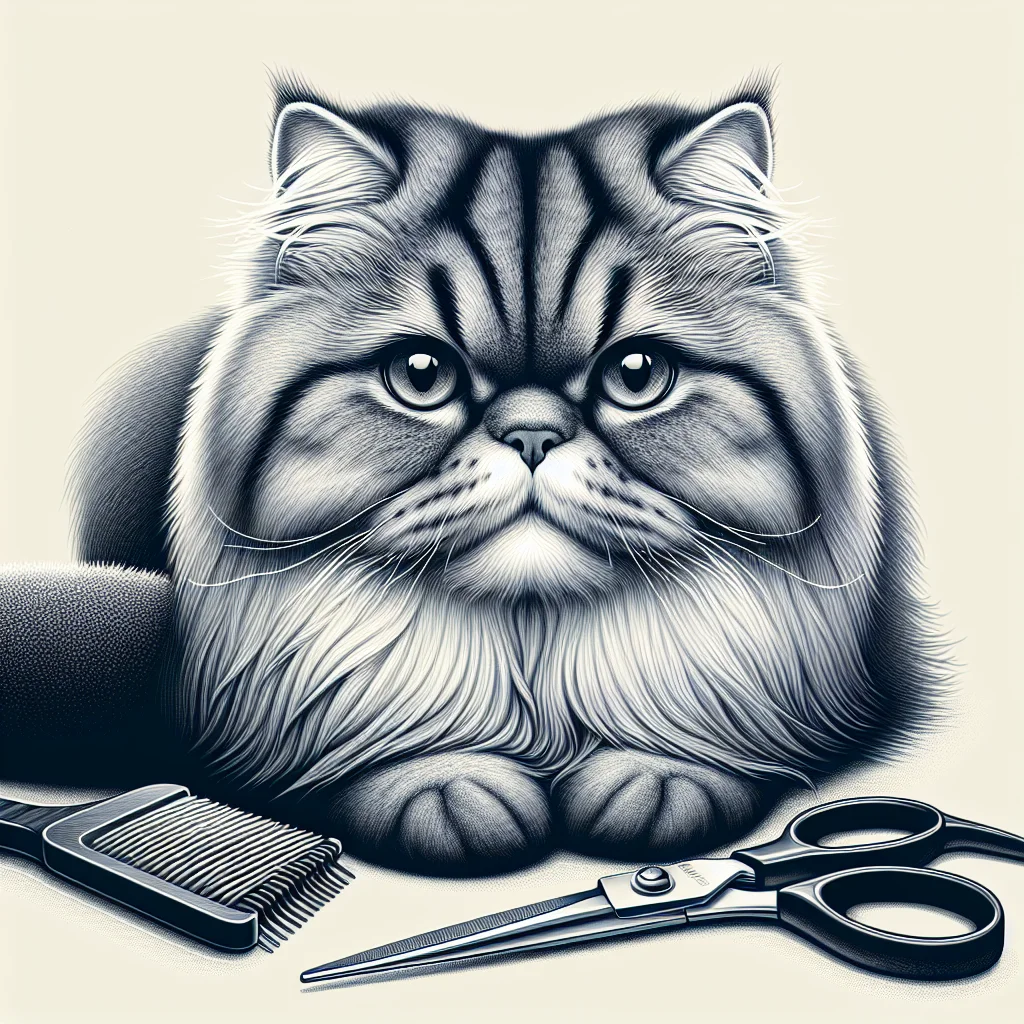If you’ve ever wondered how to tackle the task of shaving a Persian cat, look no further. In this comprehensive guide, you’ll find all the necessary steps and tips to ensure a smooth and stress-free grooming experience for your feline companion. From gathering the right tools to understanding the specific needs of Persian cats, get ready to master the art of keeping your fluffy friend cool, comfortable, and looking fabulous. Let’s dive right in and discover the secrets to a purr-fectly shaved Persian cat.
Preparing for the Shave
Shaving a Persian cat requires proper preparation to ensure a smooth and safe grooming experience. Gather all the necessary tools before you begin to make the process more efficient. You’ll need clippers or scissors specifically designed for grooming, a grooming harness to secure the cat, a detangling spray or conditioner, a soothing ointment, and cleaning supplies for afterwards.
Choosing the right location for the shave is essential. Find a quiet space where you can comfortably groom your cat without distractions. A bathroom or a dedicated grooming area works well. Make sure the space is well-lit and has a non-slip surface to prevent accidents.
Before you start shaving, it’s important to brush your cat’s coat to remove any tangles or mats. This will not only make the shaving process easier but also minimize the risk of pulling or hurting your cat’s skin. Use a soft-bristle brush or a comb designed for Persian cat fur. Be gentle yet thorough, taking time to untangle any knots you come across.
Ensuring Safety and Comfort
Safety should always be your top priority when shaving a Persian cat. Both you and your feline friend should be protected throughout the process. Wear long sleeves and gloves to prevent scratches and bites. Consider using a grooming harness to secure your cat and provide stability while you work. This will also minimize the chances of accidentally hurting your cat or causing unnecessary stress.
Next, consider your cat’s overall health before proceeding with the shave. If your cat has any underlying health conditions or is prone to skin irritations, it’s essential to consult with a veterinarian before attempting to groom them. Your vet can provide guidance on whether shaving is appropriate and offer any necessary recommendations or precautions.
Creating a calming environment is crucial for a successful shave. Cats are often sensitive to their surroundings, so it’s important to minimize noise and distractions. Play soft, soothing music or use aromatherapy diffusers with calming scents such as lavender or chamomile. Additionally, consider using a grooming table or a comfortable surface that your cat is familiar with, as this can help them feel more relaxed during the process.
Choosing the Right Shaving Technique
Researching different shaving styles for Persian cats will help you decide on the perfect cut for your furry friend. Browse through grooming books or reputable online sources to gather inspiration and understand the various options available. Keep in mind that some styles may require more maintenance than others.
Once you’ve decided on the desired cut, it’s wise to consult a professional groomer. They have the experience and expertise to recommend the most suitable shaving technique for your cat. A groomer can also provide valuable tips and insights into how to achieve the desired result while minimizing any discomfort for your cat.

Getting Started with the Shave
Before beginning the shave, ensure that your cat is securely harnessed to prevent any sudden movements or escape attempts. This will make the grooming process safer and more manageable. Choose either an electric clipper or manual scissors, depending on your comfort level and your cat’s reaction to the sound and vibrations of clippers.
When starting the shaving process, it’s best to begin with the least sensitive areas of your cat’s body. This usually includes the back, sides, and hindquarters. By doing so, your cat will have time to adjust to the sensation and noise of the clippers or scissors before you approach more sensitive areas.
Dealing with Sensitive Areas
Approach the face and head with caution, as these are particularly sensitive areas for cats. Start by trimming the hair around the eyes, carefully removing any excess fur that might obstruct your cat’s vision. Take your time and be gentle to avoid accidentally injuring your cat or causing discomfort.
When shaving around the ears, it’s crucial to exercise extra care. Use small, precise movements to trim the hair without touching the delicate skin inside the ears. Pay attention to the direction of hair growth and avoid going against it, as this can cause irritation or small cuts.
Shaving around the anus and genitals requires the utmost care. These areas are extremely sensitive, and any accidental nicks or cuts can cause significant discomfort for your cat. Keep the area clean and dry, and use small, controlled movements to trim the hair while avoiding direct contact with the skin.

Addressing Matting and Knots
Mats and knots are common issues in Persian cat fur, and addressing them properly is essential for a successful shave. Identify any mats or knots by gently running your fingers through your cat’s coat. Carefully separate them with your fingers or a wide-toothed comb, being cautious not to pull or tug on the fur, which can cause pain and discomfort.
If you encounter stubborn mats, a detangling spray or conditioner can be helpful. Spray a small amount directly onto the mat and gently work it through with your fingers or a comb. This will help soften the fur and make it easier to remove the mat without causing any harm to your cat’s skin.
For severe matting that cannot be resolved through regular grooming, it’s advisable to seek professional help. A professional groomer has the necessary tools and expertise to handle severe matting without causing unnecessary stress or discomfort to your cat.
Maintaining Hygiene and Cleanliness
Maintaining hygiene and cleanliness throughout the grooming process is crucial for the well-being of both you and your cat. Regularly clean and disinfect your grooming tools before and after each use to prevent the spread of bacteria or infections. Use a mild soap and warm water to clean your clippers, scissors, and combs, and allow them to dry thoroughly.
Collect and dispose of the shaved fur properly to avoid any mess or allergies. Use a lint roller or tape to pick up loose fur from the grooming area and discard it in a sealed bag. This will prevent any fur from being ingested or causing allergies in your household.
Once you’ve completed the shaving process, clean up any mess promptly. Dispose of any remaining fur and sanitize the grooming area to remove any lingering odors or bacteria. Pay attention to corners and crevices where fur may collect, and use pet-friendly cleaning products to ensure a safe environment for your cat.
Post-Shave Care
After the shave, carefully examine your cat’s skin for any signs of irritation or redness. It’s not uncommon for cats to experience mild skin sensitivity after shaving. If you notice any irritations, apply a soothing ointment recommended by your veterinarian to alleviate any discomfort and encourage healing.
Providing post-shave comfort and warmth is essential to keep your cat feeling safe and secure. Offer a cozy bed or blanket in a quiet area where your cat can rest and relax. Make sure the room is at a comfortable temperature to prevent any chilling, especially if your cat’s fur has been significantly trimmed.
Managing Hair Regrowth
Establishing a regular grooming routine is vital to manage your Persian cat’s hair regrowth. Regularly brush your cat’s coat to prevent tangles and mats from forming between shaves. This will also help distribute natural oils and keep the fur healthy and shiny. Engaging in daily or weekly brushing sessions will not only maintain your cat’s appearance but also strengthen the bond between you and your feline companion.
Monitor your cat’s fur for any new matting or knots that may develop. Pay particular attention to areas such as the armpits, behind the ears, and the belly, where mats tend to form more easily. If you notice any matting, address it promptly by gently working it apart with your fingers or using a comb. Regular grooming will help prevent mats from becoming severe and requiring extensive shaving.
Considering professional grooming for maintenance can be beneficial, especially if you’re not comfortable with or don’t have the time for regular grooming. A professional groomer can help maintain your cat’s coat by providing regular trims and addressing any matting or grooming challenges that may arise. Ensure you communicate your preferences and any concerns clearly to the groomer, so they can tailor their approach to suit your cat’s specific needs.
Seeking Professional Help
Knowing when to consult a professional groomer is crucial for the well-being of your Persian cat. Some situations may require specialized knowledge and equipment that a professional groomer can provide. If you’re unsure about your grooming skills or your cat’s specific needs, it’s always better to seek professional help.
When finding a reputable cat groomer, do your research and ask for recommendations from trusted sources such as friends, family, or your veterinarian. Look for groomers who have experience working with Persian cats and understand their unique grooming requirements. Schedule a consultation with the groomer to discuss your expectations and any concerns you may have before making a final decision.
During your consultation, communicate your preferences clearly to the groomer. Provide details about the desired grooming style, any sensitivities or health concerns your cat may have, and any previous grooming experiences that may have influenced your cat’s comfort level. A good groomer will listen and address your concerns, ensuring the grooming experience is as safe and stress-free as possible for your Persian cat.
By following these guidelines and taking the necessary precautions, you can successfully shave your Persian cat while prioritizing their safety and well-being. Remember, patience and a gentle approach are key to maintaining a positive grooming experience for both you and your feline companion.

